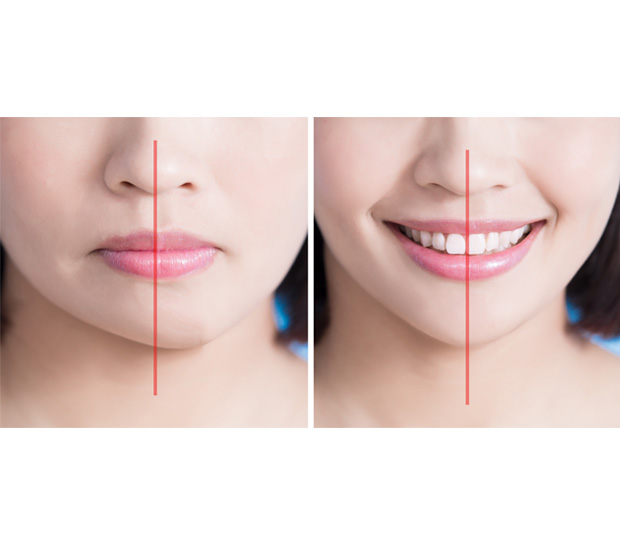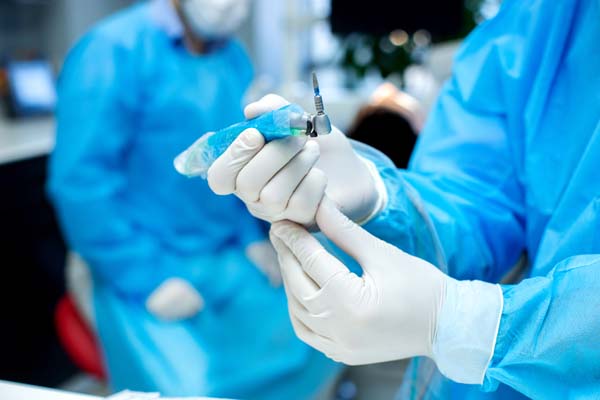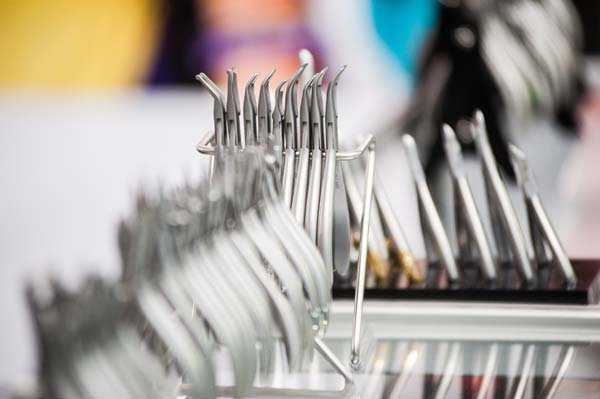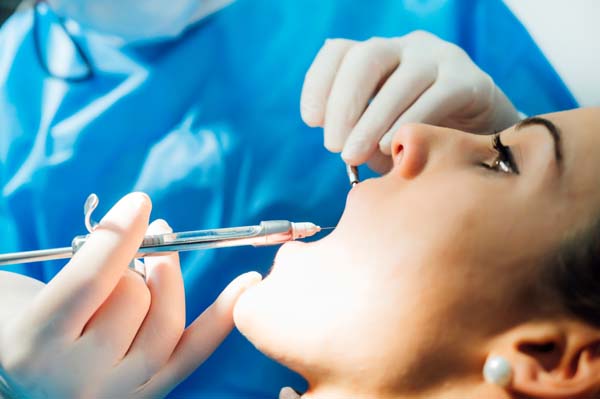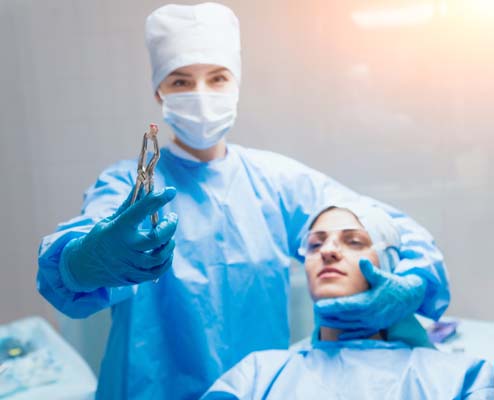Corrective Jaw SurgeryCoon Rapids, MN
Jaw Surgery
Jaw surgery is required when a patient’s teeth or jaws do not meet correctly and is untreatable by orthodontics. Orthognathic surgery can improve an individual’s appearance greatly and has often been cited as a cause for improved confidence.
Who Needs Corrective Jaw Surgery?
Patients who suffer from improper jaw formation or improper bites can benefit from corrective jaw surgery. Ultimately, Dr. El Deeb will determine if orthognathic surgery is required via an in-depth examination, but there are some symptoms that can be telling if a patient needs treatment. Some of these symptoms include:
- Protruding lower jaw
- Problems speaking
- Open bite
- Chronic pain in jaw
- TMJ
- Problems biting or chewing
Jawbone Health
Your teeth play an important role in the health of your jaw. Missing teeth can cause bone loss at the site of the extraction, which can lead to problems with your oral health and appearance. Jawbone loss can lead to a number of problems that can affect your quality of life.
Your jaw’s bone tissue is maintained by use, similar to how your body’s muscles use exercise. When teeth are correctly placed in the jawbone, activities such as chewing will stimulate the jawbone. When teeth are missing, the jawbone will not receive this stimulation, and the bone will begin to break down or reabsorb into the body.
What Types of Problems Can Tooth Loss Cause?
Tooth and Jawbone Structure loss can result in several problems, including:
- Expansion of the sinus
- Difficulty or pain during chewing
- Decreased lip support
- TMJ Pain or headaches
- Drifting or loosening of remaining teeth
- Difficulty speaking
- Adjustments to your facial profile
Ridge Augmentation
When you have a tooth extracted your dentist may need to recreate the contour your gums normally had. This procedure is called a Ridge Augmentation and is fairly common after a tooth extraction.
What are Ridge Augmentations?
Ridge Augmentation gets its name from the alveolar ridge, which is the bone in the jaw that is located around the root of your tooth. After a typical tooth extraction, your jawbone’s empty socket will heal, replacing the tooth with bone and tissue. If the bone around the tooth breaks during the extraction, the socket may be unable to heal correctly, which can cause the socket to deteriorate. Ridge Augmentation is used to rebuild the original height and width of this ridge around the socket, which will help with the placement of dental implants and provide cosmetic benefits.
What happens during a Ridge Augmentation?
Ridge augmentation typically takes place immediately after a tooth extraction and places the bone grafting material in the tooth’s socket. After this is completed, a patient’s gum tissue is sutured over the socket. Once the area has healed, Dr. El Deeb can prepare the area for a dental implant. Ridge Augmentation is typically performed under local anesthesia in our office.
Sinus Lift
What is a Sinus Lift?
The most common bone grafting procedure, a sinus lift, treat the bone in the upper jaw. A sinus lift builds up bone adding additional bone so an implant can be placed in this area. Strengthening of the bone in this region can help to secure dental implants.
Is a Sinus Lift Right for Me?
You may need a sinus lift if:
- You are missing teeth in the upper portion of your jaw.
- You are missing a bone in the upper portion of your jaw.
- You lack teeth due to a birth condition.
- You are missing most maxillary teeth and need support for implants.
What is Sinus Lift Surgery?
In most sinus lift procedures, the molar region or premolar region of the jawbone is exposed with a small incision. The membrane lining the sinus above the jawbone is pushed upward, making room for the bone grafting. Bone grafting material can be taken from the patients’ body, a cadaver, or synthetic material. Depending on the type of graft, healing can take up to several months. The implanted bone becomes part of the patient’s jaw. Dr. El Deeb will determine the appropriate amount of time necessary in the healing before an implant can be inserted. If there is ample bone in the upper jaw, it is possible for a sinus lift and implant procedure to be performed in a single surgery. If not enough bone is available, multiple procedures are necessary.
Nerve Repositioning
Nerve repositions is a possible procedure that is taken when the main nerve in the lower lip and chin is in the way of a dental implant. This nerve is called the inferior alveolar nerve.
About Nerve Repositioning
Nerve repositioning most commonly occurs when implants are being places in the area of the back molars of the lower jaw. Repositioning the lower alveolar nerve is not usually considered first as an option for surgery – typically is only considered after several other alternatives, like blade implants. Dr. El Deeb usually removes a portion of the side cheek to isolate and bundle the nerves. The implant is placed while the nerve is in isolation, and when the implant procedure is complete, the nerve bundle is placed back. Usually, this procedure is accompanied by a bone grafting procedure to cover the access area.
Is Nerve Repositioning for Me?
In the case of nerve repositioning, this option is usually determined by Dr. El Deeb on a case-by-case basis. If a patient needs a dental implant in the back molars or premolars on the lower jaw, the pre-surgery will determine the necessary methods for implanting securely.
Socket Preservation
After a tooth extraction, the brain no longer receives the stimulus from the missing tooth, and this can lead to a lack of healing or preservation around the gums and socket where the tooth preservation once was. This can cause further problems down the line when implants may be required. It can also cause deformities in the patients’ smile.
What is Socket Preservation?
After a tooth extraction, there may be unnecessary bone loss and empty space in the jaw that can affect a patient’s smile. Dr. El Deeb can employ multiple procedures to fill the empty space and minimize the shrinkage of the gums. Socket preservation is a necessary element of tooth extraction to help the body receive the stimulus necessary to repair the gums and socket.
Contact Us
Northside Minnesota Oral & Maxillofacial Surgeons is located at 11441 Osage St NW Ste 3 Coon Rapids, MN 55433.
